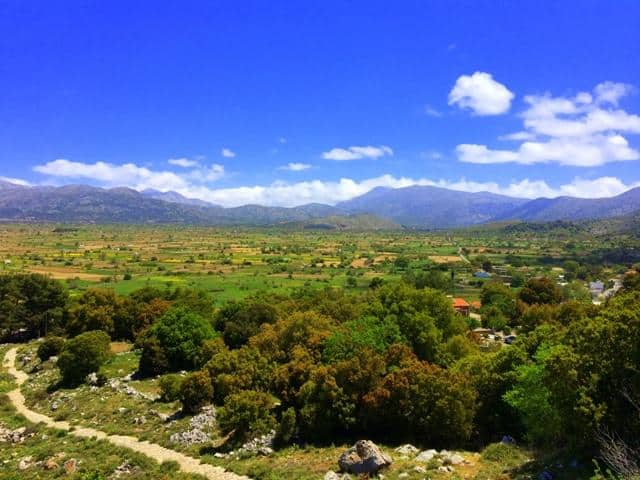Today I would like to talk to you about two places in Crete which might not have much in common, but surprised me for different reasons during my journey through the island’s eastern part.
The first one is Lasithi. I visited it on my first travel day in this beautiful island and I reached it from Heraklion airport after a one and a half hour drive on a very comfortable road.
During my first kilometres on Greek land I really appreciated the path that led me on the highland and was barely able to resist from stopping every few metres to enjoy the charming sights offered from the road. But here is something I learned about Crete in the following days: every road has a stunning sight to offer, and never the same.
Lasithi’s highland is a a large depression located among Dikti‘s mountain range. This huge plain rises at about 900 metres from the sea and hosts cultivated fields and countless fruit trees. A majestic corner of unmatched beauty.
Another unmistakable presence are the windmills. Or to be more specific: what remains of them. As soon as I arrived on the highland I was greeted by three wonderful windmills, made of stone and with iron blades and white canvas. But beside being beautiful, these buildings aren’t more than a tourist highlight. Once on the top of the highland I realized that there are but a few windmills still working.
I wished I could travel back in time, in 17th century, when all windmills were still used to mill and irrigate. At that time Lasithi was filled by 20.000 windmills and the white canvas were a shiny cover over the wide plain. Today’s windmills – including those out of business – are only 5000.
But Lasithi’s main attraction is Dikteon Cave (also called Psyhrò Cave). As the myth goes, here Rea secretly gave birth to Zeus in order to hide him from his father Kronos who had already eaten his brothers. If you want to visit this cave be prepared for a 15 minute walk up the slope though.
The second place I want to talk to you about is the Palace of Knossos, Crete’s most important archeological site. And here is a very important hint if you want to enjoy your visit without any fuss: be the first to enter in the morning (the entrance fee is 6 euros). I arrived at eight o’clock and was able to appreciate my tour before all the tourists arrived.
The palace is located close to the airport, five kilometres from Iraklio. Its ruins were discovered in 1900 by British archeologist Sir Arthur Evans, who got so passionate about this place that he spent here 35 years of his life. The guided tour takes about one hour and a half and it allows to picture quite clearly how the palace had to look like during its golden age, in 1700 BC. For sure, the renovated frescos add a great deal of charm, especially the Bull Fresco.
Finally, wherever you want to go, if to Lasith or to Cnosso’s Palace look out for the traffic signs (unless you travel with a navigator, of course): there are just few of them and if you miss one out you will easily be lost on the island’s tortuous roads!
I live in Turin, which I deeply love, but still I often feel the need to leave and explore new fantastic places. I believe travelling to be an art and the traveller with most curiosity and creativity will be able to find the most marvellous paths.









